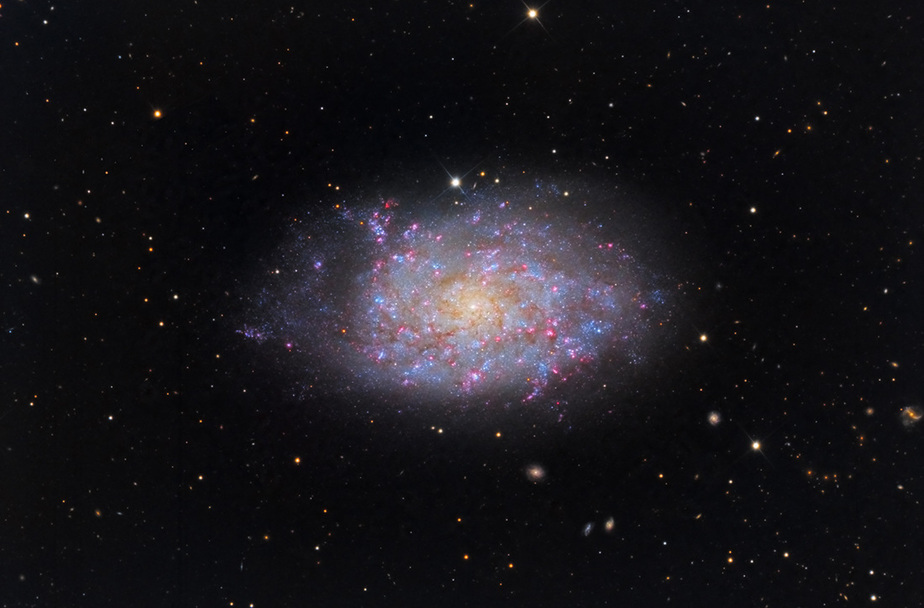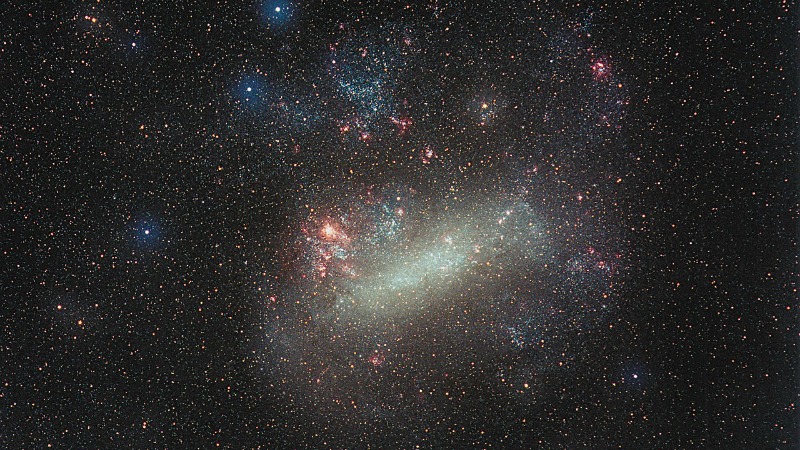Page 1 of 2
Found images: 2017 August
Posted: Tue Aug 01, 2017 4:41 pm
by bystander
Have you seen a great image or video somewhere that you think would make a great APOD? Nominate it for APOD! Please post as much information here as you have about the image/video with a link to any source(s) for it you know of here, and the editors will take a look.
When posting the image itself, please do not post anything larger than a thumbnail here; please honor the copyright holder's copyright.
Please keep hotlinked images under 400K.
Thank you!
<< Previously
Re: Found images: 2017 August
Posted: Wed Aug 02, 2017 8:12 am
by starsurfer
Re: Found images: 2017 August
Posted: Wed Aug 02, 2017 8:15 am
by starsurfer
Re: Found images: 2017 August
Posted: Thu Aug 03, 2017 9:22 am
by starsurfer
NGC 125
http://www.adamblockphotos.com/ngc-125.html
Copyright: Adam Block/Mount Lemmon SkyCenter/University of Arizona
Acknowledgement: CHART32
Re: Found images: 2017 August
Posted: Thu Aug 03, 2017 9:27 am
by starsurfer
Re: Found images: 2017 August
Posted: Sat Aug 05, 2017 9:08 am
by starsurfer
Tarantula Nebula (NGC 2070)
https://www.eso.org/public/news/eso0650/
Copyright: ESO/R. Fosbury (ST-ECF)
Re: Found images: 2017 August
Posted: Mon Aug 07, 2017 8:52 am
by starsurfer
ESO: From the Residencia to the Milky Way
Posted: Mon Aug 07, 2017 1:35 pm
by bystander
From the Residencia to the Milky Way
ESO Picture of the Week | 2017 Aug 07
[c][attachment=0]potw1732a[1].jpg[/attachment][/c][hr][/hr]
This image captures the route from the
Residencia — the guesthouse for visitors to ESO's Paranal Observatory— to the breathtaking heart of the
Milky Way, which covers the entire night sky.
The site shown here is Cerro Paranal, home to ESO's Very Large Telescope (
VLT), a telescope comprising four 8.2-metre
Unit Telescopes. The VLT can also act as an
interferometer in the form of the appropriately-named VLT Interferometer, or
VLTI, by gathering additional light from four smaller
Auxiliary Telescopes, which can be independently moved around and placed in
different configurations. One of these Auxiliary Telescopes is shown in this image, gazing at the sky with its dome wide open.
The road from the observatory to the Residencia appears as a shining thread, weaving amongst the rocky outcrops and hills of the desert environment. The yellow glow is caused by dim security lights — the street lighting is kept to a minimum in order to avoid unnecessary light pollution.
HEIC: Small but Significant (NGC 5949)
Posted: Mon Aug 07, 2017 1:44 pm
by bystander
Small but Significant
ESA Hubble Picture of the Week | 2017 Aug 07
The subject of this NASA/ESA Hubble Space Telescope image is a
dwarf galaxy named NGC 5949. Thanks to its proximity to Earth — it sits at a distance of around 44 million light-years from us, placing it within the Milky Way’s cosmic neighbourhood —
NGC 5949 is a perfect target for astronomers to study dwarf galaxies.
With a mass of about a hundredth that of the
Milky Way, NGC 5949 is a relatively bulky example of a dwarf galaxy. Its classification as a dwarf is due to its relatively small number of constituent stars, but the galaxy’s loosely-bound spiral arms also place it in the category of
barred spirals. This structure is just visible in this image, which shows the galaxy as a bright yet ill-defined pinwheel. Despite its small proportions, NGC 5949’s proximity has meant that its light can be picked up by fairly small telescopes, something that facilitated its discovery by the astronomer
William Herschel in 1801.
Astronomers have run into several cosmological quandaries when it comes to dwarf galaxies like NGC 5949. For example, the distribution of
dark matter within dwarfs is quite puzzling (the “
cuspy halo” problem), and our simulations of the Universe predict that there should be many more dwarf galaxies than we see around us (the “
missing satellites” problem).
Re: Found images: 2017 August
Posted: Mon Aug 07, 2017 3:07 pm
by Ann
This is a splendid galaxy (and IFN) image. Thanks for posting it, starsurfer, and thanks for producing it, Mark Hanson!

Ann
Re: Found images: 2017 August
Posted: Wed Aug 09, 2017 10:12 am
by starsurfer
North America Nebula (NGC 7000)
http://astrophotography.aa6g.org/Astrop ... -sx16.html
Copyright: Chuck Vaughn
Re: Found images: 2017 August
Posted: Wed Aug 09, 2017 10:14 am
by starsurfer
Re: Found images: 2017 August
Posted: Wed Aug 09, 2017 10:18 am
by starsurfer
Flaming Star Nebula (IC 405)
http://www.astrobin.com/276292/
Copyright: Tero Turunen
Re: Found images: 2017 August
Posted: Thu Aug 10, 2017 10:53 am
by starsurfer
NGC 7331 and Stephen's Quintet
http://www.pbase.com/tango33/image/160736472
Copyright: Kfir Simon
Re: Found images: 2017 August
Posted: Fri Aug 11, 2017 10:09 am
by starsurfer
Re: Found images: 2017 August
Posted: Fri Aug 11, 2017 10:10 am
by starsurfer
NGC 5844
http://www.chart32.de/index.php/component/k2/item/184
Copyright: CHART32
Processing: Johannes Schedler
Re: Found images: 2017 August
Posted: Fri Aug 11, 2017 10:12 am
by starsurfer
ESO: Lunar Eclipse @ ESO
Posted: Mon Aug 14, 2017 1:16 pm
by bystander
Lunar Eclipse @ ESO
ESO Picture of the Week | 2017 Aug 14
During the early evening of 7 August, a partial lunar eclipse was visible in the sky above the
ESO Headquarters in
Garching bei München, Germany.
A
lunar eclipse occurs when the Earth, Moon and Sun are aligned, and the Earth casts a shadow on the Moon. This time, only a small part of the Moon entered the Earth’s inner shadow, the umbra, but it still made for a stunning view.
While observing from the rooftop of the ESO Headquarters building,
ESO Photo Ambassador Petr Horálek captured the eclipse along with spectacular rays from the setting Sun behind him, known as
anticrepuscular rays — a union of astronomical and atmospherical phenomena. The
Picture of the Week shown here is a compilation of over 50 images of the eclipse, starting from the peak of the eclipse just as the Moon rose above the horizon, to the eclipse’s conclusion when the Moon was high in the sky.
Horálek captured the eclipse near its peak in a
second photo. The entire Moon is turned red by its light scattering through the Earth’s atmosphere. Meanwhile, the bottom right part of the full Moon blends into the sky having entered the umbra of the Earth’s shadow.
Europe’s next lunar eclipse will be a total eclipse, visible on 27 July, 2018.
HEIC: A Distorted Duo (IC 1727)
Posted: Mon Aug 14, 2017 1:28 pm
by bystander
A Distorted Duo
ESA Hubble Picture of the Week | 2017 Aug 14
Gravity governs the movements of the cosmos. It draws flocks of galaxies together to form small
groups and more massive galaxy
clusters, and brings duos so close that they begin to tug at one another. This latter scenario can have extreme consequences, with members of
interacting pairs of galaxies often being dramatically distorted, torn apart, or driven to smash into one another, abandoning their former identities and
merging to form a single accumulation of gas, dust, and stars.
The subject of this NASA/ESA Hubble Space Telescope image,
IC 1727, is currently interacting with its near neighbour,
NGC 672 (which is just out of frame). The pair’s interactions have triggered peculiar and intriguing phenomena within both objects — most noticeably in IC 1727. The galaxy’s structure is visibly twisted and asymmetric, and its bright nucleus has been dragged off-centre.
In interacting galaxies such as these, astronomers often see signs of intense
star formation (in episodic flurries known as
starbursts) and spot newly-formed
star clusters. They are thought to be caused by gravity churning, redistributing, and compacting the gas and dust. In fact, astronomers have analysed the star formation within IC 1727 and NGC 672 and discovered something interesting — observations show that simultaneous bursts of star formation occurred in both galaxies some 20 to 30 and 450 to 750 million years ago. The most likely explanation for this is that the galaxies are indeed an interacting pair, approaching each other every so often and swirling up gas and dust as they pass close by.
Re: Found images: 2017 August
Posted: Mon Aug 14, 2017 3:17 pm
by Ann
The portrait of IC 1727 is a great picture!
However...
Hubble Space Telescope wrote:
The subject of this NASA/ESA Hubble Space Telescope image, IC 1727, is currently interacting with its near neighbour, NGC 672 (which is just out of frame). The pair’s interactions have triggered peculiar and intriguing phenomena within both objects — most noticeably in IC 1727. The galaxy’s structure is visibly twisted and asymmetric, and
its bright nucleus has been dragged off-centre.
It isn't obvious to me that the nucleus of IC 1727 has been dragged off-center, or that IC 1727
has a nucleus in the first place. If it does, the nucleus is very hard to spot.
NGC 1313 with a faint nucleus and bright arms.
Photo: ESO, Henri Boffin.
The Large Magllanic Cloud, which lacks both a nucleus and bright arms.
But its brightest spot is definitely off-center.
Photo: Eckhard Slawik.
The bright regions of star formation at one end of the galactic bar of IC 1727 don't look much like a nucleus of a galactic center to me. Not all galaxies have a nucleus, certainly not a bright nucleus, particularly not relatively low-mass galaxies. A bright region of star formation doesn't necessarily correspond to a nucleus.
Of course, it is possible that astronomers have used other means to determine that the bright region of star formation at one end of the bar of IC 1727 indeed has the properties of a nucleus.
Elongated galaxy Kiso 5639. The bright starforming head may be a nucleus.
Photo: NASA, ESA, and Debra Elmegreen
Finally, let's look at Kiso 5639 whose brilliant head is a lot more off-center that the nucleus(?) of IC 1727.
Ann
Re: Found images: 2017 August
Posted: Wed Aug 16, 2017 8:40 am
by starsurfer
Sh2-308
http://cosmicphotos.com/gallery/image.p ... lbum_id=11
Copyright: Jason Jennings
This nebula is also catalogued as RCW 11.
Re: Found images: 2017 August
Posted: Wed Aug 16, 2017 8:41 am
by starsurfer
Re: Found images: 2017 August
Posted: Wed Aug 16, 2017 8:47 am
by starsurfer
NGC 1360, NGC 1398 and NGC 1371
http://www.atacama-photographic-observa ... .php?id=54
Copyright: Thierry Demange, Richard Galli and Thomas Petit
NGC 1360 is the planetary nebula on the right, NGC 1398 is the galaxy at the bottom and NGC 1371 is the galaxy at the top.
Re: Found images: 2017 August
Posted: Wed Aug 16, 2017 8:50 am
by starsurfer
Markarian's Chain
http://www.cxielo.ch/gallery/f/markarian
Copyright: Martin Rusterholz
Re: Found images: 2017 August
Posted: Wed Aug 16, 2017 8:51 am
by Elias Chasiotis
The ring of fire.
Copyright: Eugen kamenew
(photos and description of the photographer in the following links).
https://www.flickr.com/photos/65100187@N05/8767390453/
https://www.flickr.com/photos/65100187@N05/8766633833/




